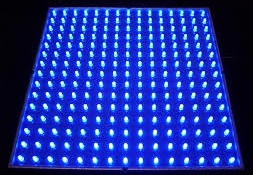 As a relative newcomer to the lighting industry, LEDs are not only being studied for their efficacy and cost-effectiveness, but also their impact on health. ANSES, the French Agency for Food, Environmental and Occupational Health & Safety, has published a report claiming that risks have been identified concerning the use of certain LED lamps. Blue light, says the report, causes a photochemical risk to the eye that is cumulative. In other words, the danger exists even in low doses, if these doses are repeated over long periods of time. This is particularly true for children, for workers likely to be exposed to high-intensity lighting, and to populations that are already light-sensitive.
As a relative newcomer to the lighting industry, LEDs are not only being studied for their efficacy and cost-effectiveness, but also their impact on health. ANSES, the French Agency for Food, Environmental and Occupational Health & Safety, has published a report claiming that risks have been identified concerning the use of certain LED lamps. Blue light, says the report, causes a photochemical risk to the eye that is cumulative. In other words, the danger exists even in low doses, if these doses are repeated over long periods of time. This is particularly true for children, for workers likely to be exposed to high-intensity lighting, and to populations that are already light-sensitive.
The U.S. Department of Energy, however, has issued no such warnings. According to a DOE fact sheet, LEDs are inherently “neither more hazardous nor more beneficial to human health than any other type of light source.” The fact sheet does note, however, that “light which is beneficial during the day may be harmful at night.” A study at Harvard Medical School appears to support this. Blue wavelengths—which are beneficial during daylight hours because they boost attention, reaction times, and mood—seem to be the most disruptive at night, say the Harvard researchers. Exposure to light suppresses the secretion of melatonin, a hormone that influences circadian rhythms. Even low-level light can affect people’s ability to sleep, and that has been linked to increased risk for depression, as well as diabetes and cardiovascular problems. The effects have become more noticeable with the proliferation of electronics with screens, as well as energy-efficient lighting, which increase our exposure to blue wavelengths after sundown.
